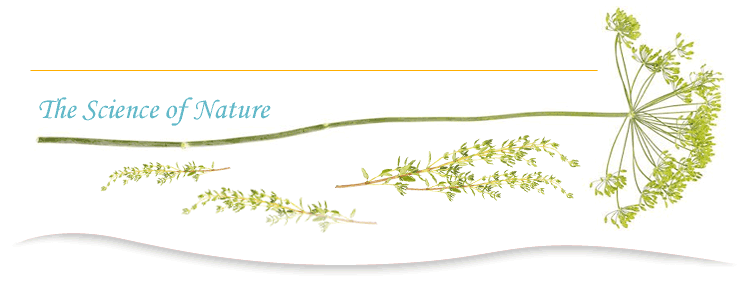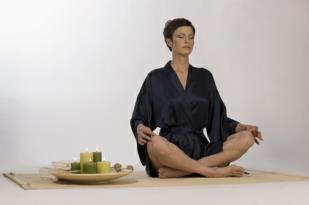

Mind and body
our risk of developing chronic diseases and cancer. Conversely, there are also numerous pieces of evidence demonstrating that a low level of stress, optimism, and a positive attitude greatly diminish the incidence of those diseases by helping maintain optimal physiological functions, thus increasing our energy levels and boosting our immune system and our capacity to resist the development of diseases and to even heal us.
For instance, researchers have been able to identify part of the biological processes involved in the clear efficacy of the placebo response observed in all fields of medicine. Research has also showed that meditation produces demonstrable active and positive effects on brain and immune functions (References).
Stress can be generated by multiple factors and events. Ultimately, however, it results from the way we think and the way we choose to interpret and react to the vicissitudes of life. The way we think and see life has a significant impact on our well-being. And the way we think and see life is a choice. Many people find it actually very difficult to conceptualize and understand that this choice is ours. Most of the time, the vast majority of us feels that we are at the mercy of what is happening around us and that we often do not have much choice. For instance, people may think: “How can I manage my stress effectively when it is the direct consequence of people or events that I cannot control; how can I change or choose my thoughts when I do not have control over what triggers them?”
The voice within
Most of us do not realize that we are all engaged in a constant internal dialogue, or self-talk. Most of this self talk is unconscious and is a spontaneous and perfectly normal and natural aspect of human psychology. Research demonstrates that an average person will engage in such internal dialogue approximately 50,000 times per day. Whether you are conscious of it or not, this voice within your mind never stops; and it makes comments on everything: external events, other people, internal feelings, etc. Most of the time, however, that voice talks about us. Furthermore, psychologists have shown that this non-stop internal dialogue and those comments that we unconsciously make all day long about ourselves are negative 80% of the time. Moreover, this internal dialogue and, consequently, our thoughts and reactions to events, real or imagined, have been shown to be repetitive, compulsive and negative. Our thoughts and the way we react to events are like conditioned reflexes that have been repeating themselves since our childhood. They are almost always the same regardless of what triggers them and, in that sense, are often inappropriate and do not help us respond appropriately to events and challenges we face in our day-to-day lives.
According to Transactional Analysis, one of the theories explaining how people are structured psychologically, it is around the age of seven that a child adopts a “life script” or a vision of the world, basically deciding what the world is and what his life will be. Thereafter, our reactions in response to life events are based on that decision we made about life as a child. It is like looking at things through the same coloured lenses or filter for the rest of our life. We could even say that most of us constantly interpret, redefine, and even distort reality in order for it to match our childhood script. And more often than not, we just simply discount evidence that would contradict that vision of life that we developed when we were only seven. This is naturally mostly unconscious, as is our constant internal dialogue. The good news is that when we become aware of the internal negative thoughts and judgements of our childhood scripts, and when we are ready to question our negative beliefs and misconceptions about ourselves and about life in general, we can then start a truly liberating and fascinating quest.
How can I do this? How can I change those thoughts and that way of reacting to life that I have been using and reinforcing for so many years?
The first step is to become aware of your negative internal dialogue. It is not an easy task, and it may even be scary at times because it requires thinking, speaking, and acting outside our zone of comfort. It also requires that we confront our shadow. The shadow is that unconscious part of us where we have hidden and kept all our deepest fears and dark thoughts that we have repressed while growing up because they were so painful. It is so much easier to stay within our zone of comfort, even if it is very negative, than to take a step forward outside that zone in which we have spent almost all of our life. The good news is that it is definitely doable.
Does that appear to be too much of a daunting task? Or you may simply not know where to start. Small steps are the key.
First, just recognize the fact that you need to bring changes to the way you see life, interpret situations, and react to events. This is already a significant realization. The realization is that you need to change your own paradigms and mindsets, not the ones of others around you. This is the only way you will be able to regain control of your own life. You naturally also need to have the desire to change. As Einstein said, “No problem can be solved from the same level of consciousness that created it”.
OK, I do understand that I need to change and do have the desire to work and finally get rid of all those negative thoughts and self-imposed barriers. Is it really feasible? How can I do that?
From professional and inspirational readings, cassettes and CDs; courses, training seminars, and boot camps; life coaches; various therapies, etc., there is no lack of information and guidance available. Here are some suggestions as a start. When you get more comfortable and feel that you are ready to make deeper changes to your life, you may wish to explore and master some of the elements presented here in more depth. The various references you will find at the end will provide you with additional tools that can help you getting closer to your goals.
1. Identify your negative internal dialogue and change it
Here are simple exercises that will help you identify your negative self talk and replace it by positive and empowering dialogues.
- Become aware of your negative internal dialogue.
- Each time you talk to yourself in a harsh and judgemental way, write that thought down and repeat it out loud.
- Pay attention to how you feel when you hear that thought; are you feeling fine or upset?
- When your critical inner voice comes back, notice the negative emotions it generates.
- Challenge your critical inner voice
- Control your inner voice: lower its volume, modify its tone
- Find your other voice, your real voice, your empowering voice
- Always ask yourself empowering questions only (e.g., instead of saying: “When will I get enough money to be able to obtain what I want”, ask yourself: “What can I do now to overcome this difficulty”
- Replace your negative inner dialogues by a positive and empowering self talk; develop positive and powerful affirmations and visualizations
This is probably the most powerful and liberating technique one can ever learn and experience. It cannot be more beautifully explained than by Eckhart Tolle in his wonderful and highly inspirational books: “The Power of Now”, and “Practicing the Power of Now”. Click here for more details on these powerful books
A positive attitude of gratitude reduces stress and may increase longevity, while a negative attitude of worry and fear creates tension and diseases. Affirmations and visualization are two of the most powerful tools you can learn to master in order to replace your negative thoughts and images by positive and empowering attitudes.
Affirmations
Affirmations constitute key positive and powerful messages that you send to yourself. There are two types of affirmations:
Positive affirmations, which are normally brief and very specific.
(Example: “I am successful in everything I do”)
Goal specific affirmations, which picture desires or goals as if they were already part of your reality; they are often more detailed and descriptive. (Example: “I am in control of my health and in exercising regularly I feel the energy and health flowing through my whole body and through my cells. I love and respect my body and I am grateful I am full of vitality and can play with my grand children).
How to create powerful affirmations
- Take your time and think about how you would like to be or how you would like your life to be
- Write down all the elements you would like to change
- Make positive statements from your list
- Repeat your affirmations out loud or write them down everyday.
- Repeat them with passion and let them become the reality of who you are.
Visualization techniques are very powerful and have been widely used to achieve tremendous results in many aspects of life. They are used for relaxation and healing, to build confidence and to reach your goals. Visualization is also widely used by Olympic athletes.
How to create powerful visualizations
- Go to a quiet place where you will not be interrupted
- Sit down quietly and think about how you would like to be or how you would like your life to be
- Write down your goals
- Close your eyes and imagine yourself in what you want to be
- How do you see yourself?
- Clearly picture what is around you
- Use your five senses in order to develop a rich and vivid vision: what do you see, hear, smell, touch, taste?
- Are you moving?
- What do you feel?
- Let your whole body and soul be totally impregnated by your vision as if you were there.
- Once you are done, sent your vision into the universe firmly believing that the universe is working for you and will make it happen
- Let go and forget about your vision, open your eyes and return to your daily activities.
- Repeat your visualization daily; even more often if you wish.
Here is an exercise that may help you find your path.
Get into a quiet place where you will not be interrupted. Take a pen and a piece of paper and write down your responses to the following questions:
- Remember the moments of your life when you felt most alive and happy: where were you? What were you doing?
- What are you good at?
- What do you like to do most?
- What are your talents?
- What do you feel passionate about?
- What brings the most joy in your life?
- What are your dreams?
Everyone has a talent and a unique way of expressing it. When you discover yours and become passionate about it, everything will suddenly become easier, bringing more positive energy and peace into your life.
by Eckhart Tolle
by Deepak Chopra
Mind Body Medicine: How to Use Your Mind for Better Health,A collection of articles "By Leading Authorities from the Nation's Top Medical Centers," edited by Daniel Goleman, Ph.D., and Joel Gurin.
Longevity and Optimal Health: Integrating Eastern and Western Perspectives (Annals of the New York Academy of Sciences): 1172
by William C. Bushell
by Deepak Chopra
Although the relation between mind and body has been studied for centuries, especially in Asian cultures, science has just recently started to observe and understand this fascinating link between our mind and our bodily functions and has made some amazing discoveries.
There is no lack of evidence demonstrating that many illnesses are stress-related and, therefore, preventable. Research has shown that negative thoughts and stress increase

by Dr. Robert W. Firestone
Voice Therapy: A Psychotherapeutic Approach to Self-Destructive Behavior by Robert Firestone
by McEwen, Bruce and Elizabeth Norton Lasley.
by Shakti Gawain
by Julia Cameron
by Julia Cameron

This is the path to your inner self and energies. Through meditation, you can learn how to enter that silence between your thoughts. That silence, that stillness, is the realm of the “Here and Now” where you can not only appease your stress, but enter the realm of all possibilities, where your sub-conscious will help you find answers to your questions and problems. Meditation has also been shown to produce
Autogenic Therapy by Luthe, W. & Schultz, JH. Published by The British Autogenic Society. In six volumes
EFT (Emotional Freedom Technique)
EFT combines Mind-Body medicine and acupuncture (without needles); it is based on the principle that the stimulation of certain of our body's natural stress-reduction acupuncture points by tapping on them with our fingertips, can re-balance meridian energies and improve a variety of psychological as well as physical ailments.
Developing a Spiritual Perspective of Life
Finally, strength and peace of mind can also be greatly enhanced by developing a spiritual perspective that will bring or enhance your sense of belonging and purpose in life, thus creating a deeper peace.
Transactional Analysis
Transactional Analysis (TA) is the method for studying interactions between individuals. According to TA, personal relationships and interactions operate from three different “ego states” that correspond to the roles of parent, child, and adult. In TA, a transaction is defined as “The unit of social intercourse”; it also includes the unspoken communication and psychological elements that run in parallel when two or several people interact. Another important element of TA is the identification of life positions (our general feelings about life) and life scripts (a kind of life plan) which are for the most, unconscious and decided upon by the age of seven. In TA, the approach is based on the realization that we continue to automatically re-play childhood strategies, even when this results in inappropriate behaviours and negative effects.
demonstrable active and positive effects on brain and immune functions. Sit alone, in silence, for 30 minutes in the morning and 30 minutes in the evening if you can. Reach that inner silence and stillness where you can find the answers you are looking for.
6. Identify and address co-dependence and addictions
Specific approaches for a more in-depth exploration
If you are ready to start a more in-depth exploration and really work on your internal dialogue, or to even start digging and explore what has been hiding within your shadow, your quest could become truly fascinating and transformational. There are various techniques and they are all good; your choice will depend on your own motivations and affinities. Here is a brief overview of the most popular ones, as well as some respectable references should you want to learn more or practice any of them.
5. Leisure and recreation
- Find an activity that you always wanted to do
- Chose a hobby that you enjoy
- Get involved in creative arts, music, dance, drama
- Find what you are good at. Everyone has one talent and a unique way of expressing it. When you discover yours and become passionate about it, everything will suddenly become easier, bringing more positive energy and peace into your life.
Visualization
"The thing you set your mind on is the thing you ultimately become"
-Nathaniel Hawthorne ~ (1804-1864, American Novelist, Short Story Writer)
With experience, you will be able to develop powerful visualizations; your subconscious mind will experiment and register them as if they were real and will help you reach your goals much more easily.
Read what research shows about the positive effect of meditation on your immune system, cancer and health in general; click here.
The Sourcebook of Magic : A Comprehensive Guide to the Technology of NLP by L. Michael Hall, Barbara Belnap
NLP : The New Technology of Achievement by Steve Andreas
Cognitive Behavioural Therapy : A Teach Yourself Guide by Christine Wilding
by Rhena Branch, Rob Willson
Scientific References
Meditation
2.
1.
Scientific References:
Autogenic Training, by Rosa K. R.
Autogenic Therapy - Self-help for Mind and Body by Jane Bird
Behavior Therapy Technique, Wolpe, J. & Lazarus, A.A.
by Michelle Craske & David Barlow
Progressive Relaxation, by Edmund Jacobson.
Other books:
3. Learn and master effective stress management techniques
- Learn relaxation techniques
- Learn how to meditate
- Identify your stressors (social life, school or work, money...) and learn how to take power over them
- Plan out your day and set goals. Planning your day in advance may help reduce stress produced by all that to-do stuff looming over your head. Set short term and longer term goals that are reasonable.
2. Stay in the “here and now”
I want to learn more:
Step 2 - Take Power over your negative internal dialogue
Step 1 - Awareness
Cognitive Behavioural Therapy (CBT)
CBT is a type of psychotherapy combining Cognitive and Behavior therapies. In cognitive therapy, treatment is based on the principle that negative and undesirable behaviors are the consequences of automatic thoughts, which are often inappropriate and maladapted to the situation we are facing. In Behavior therapy, treatment is based on the principle that the observable behavior can be modified in the present (as opposed to psychoanalysis that focuses on the unconscious and on past events); it uses various techniques aiming at reinforcing desirable behaviors and extinguishing undesirable behaviors. CBT help in:
- Identifying and confronting negative thoughts, beliefs, assumptions, and behaviours.
- Changing those that may be creating and maintaining symptoms.
CBT can therefore help change established negative behaviour patterns and replace them with more positive behaviours.
NLP (Neuro-Linguistic Programming)
NLP explores how we think and perceive the world through our neurological activity, how we communicate and how we program ourselves and develop our patterns of behaviour and emotions. NLP focuses on the “how” instead of the “why” and can become a powerful transformation tool.